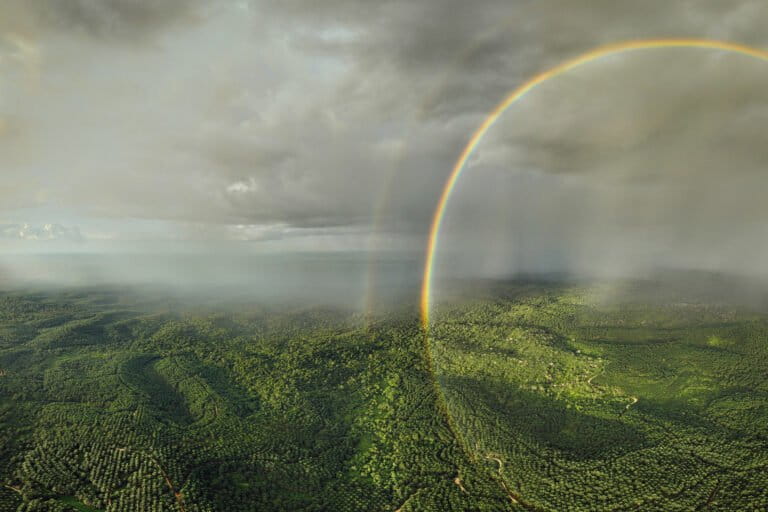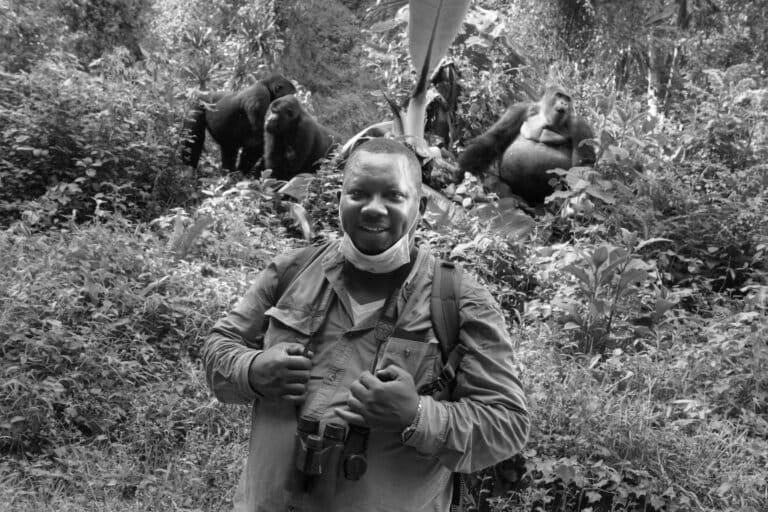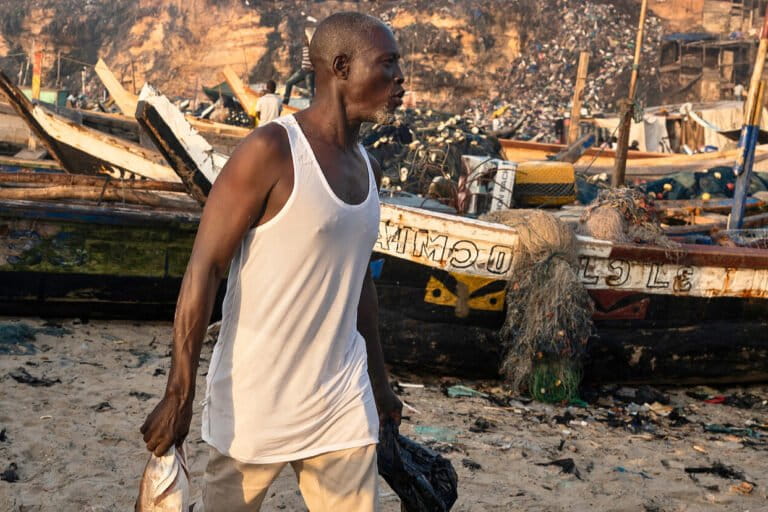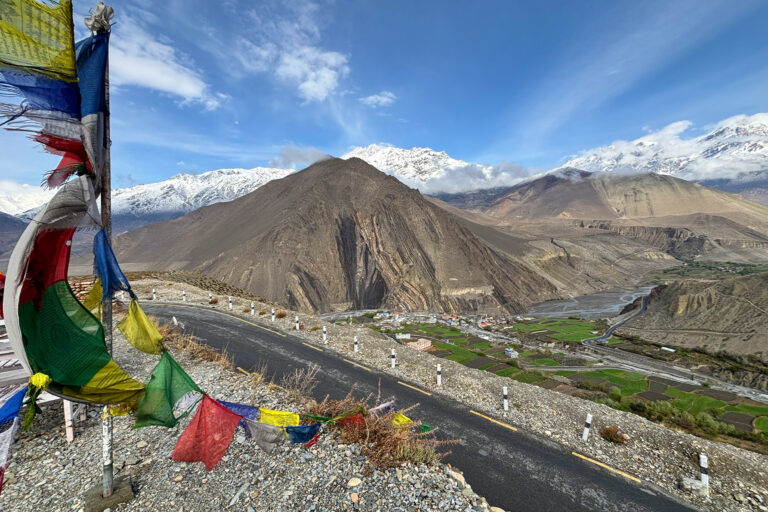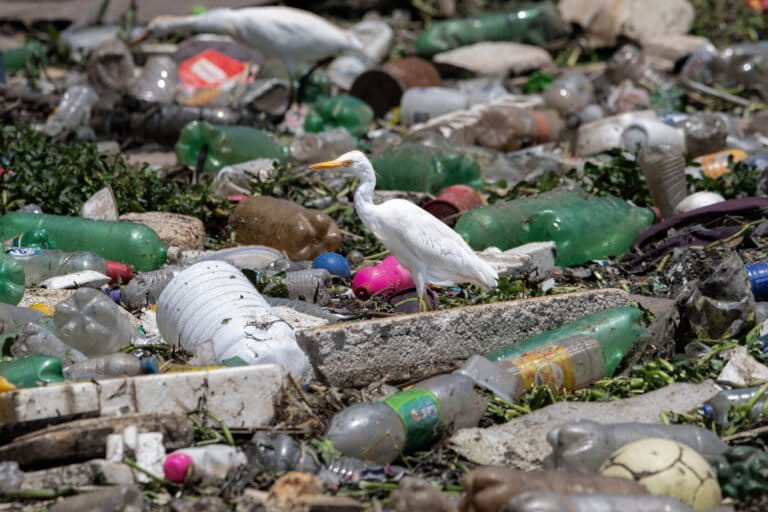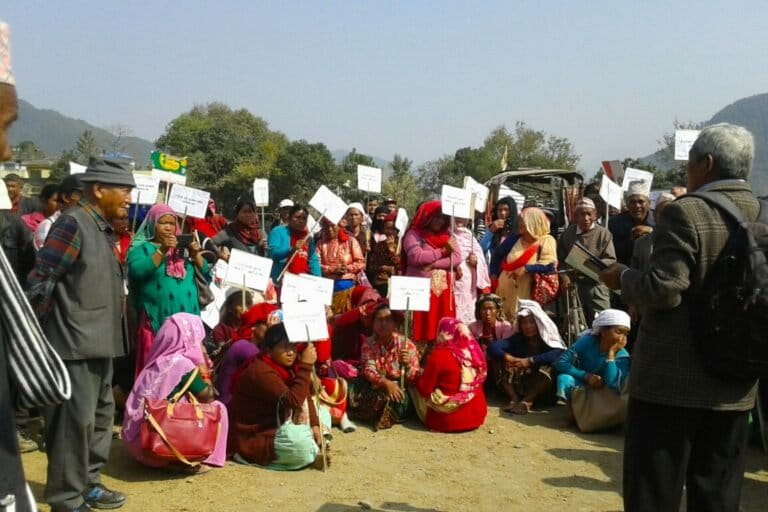- The project is the brainchild of Diogo Veríssimo, a David H. Smith Conservation Research Fellow at Johns Hopkins University. Veríssimo studies the ways human behavior and biodiversity conservation intersect, focusing in particular on conservation marketing.
- “Talking about nature has too often become about extinction, decline and loss,” Veríssimo says. “With Lost & Found we aim to make it about hope, determination and passion.”
- Mongabay spoke with Diogo Veríssimo about what first sparked his interest in rediscovered species, why it’s important to highlight the field researchers who track down lost species, and just what he hopes to ultimately achieve by telling these stories.
For the better part of the 20th century, the wooly flying squirrel (Eupetaurus cinereus) was believed to have gone extinct.
If that had been true, the world would have lost a truly remarkable species. The largest member of the squirrel family, wooly flying squirrels stand as much as two feet tall and sport bushy, two-foot tails. Despite their size, they are quite capable of using their gliding membranes to effectively move around their preferred habitat in high-elevation conifer forests, where they’re known to live in caves on steep, rocky slopes and other hard-to-reach places. The species’ call is believed by some local cultures to portend the death of a loved one, and its urine is considered an aphrodisiac.
We would never have discovered most of what we know now about wooly flying squirrels’ behavior if they had in fact gone extinct — but the species was rediscovered in northern Pakistan in 1995, thrilling scientists and wildlife lovers alike.

The wooly flying squirrel is not the only animal for which reports of its death were greatly exaggerated, of course. Species are rediscovered all the time — and the new Lost & Found project aims to tell their stories.
The project is the brainchild of Diogo Veríssimo, a David H. Smith Conservation Research Fellow at Johns Hopkins University. Veríssimo studies the ways human behavior and biodiversity conservation intersect, focusing in particular on conservation marketing. He started Lost & Found to try and shift the way we talk about conservation.
“Talking about nature has too often become about extinction, decline and loss,” Veríssimo says. “With Lost & Found we aim to make it about hope, determination and passion.”
In addition to the written word, Veríssimo and team plan to tell the stories of Earth’s rediscovered species in comics and video, as well. The Lost & Found project will officially launch tomorrow at the Earth Optimism Summit organized by the Smithsonian Institution in Washington D.C.
Mongabay spoke with Diogo Veríssimo about what first sparked his interest in rediscovered species, why it’s important to highlight the field researchers who track down lost species, and just what he hopes to ultimately achieve by telling these stories.
Mongabay: What was the initial impetus for this project? Who came up with it, and when did you officially start working on it?
Diogo Veríssimo: The idea for this project came to me as a result of my fascination with species rediscoveries and my research focus on conservation marketing. I have strong childhood memories of reading about species such as the Tasmanian tiger (Thylacinus cynocephalus), which to this day is hypothesized to still exist in some remote part of Australia, and thinking: how incredible would it be to find these species again? Those tales of loss and mystery conjured in me strong emotions that I hope to pass on through the stories in the Lost & Found project. Lastly, my professional focus on conservation marketing means that I am in the business of creating effective messages to promote biodiversity conservation. One aspect I was always surprised about, when it came to the messages that we as conservationists put out, is how predominantly negative they were. It’s time that we move towards more inspirational messaging, in order to avoid generating apathy in those we are trying to engage.
In terms of the official kick-off date, I bounced the concept behind this project around for a couple of years before we received or first funding, from the British Ecological Society, in July 2014. I guess that was when the project officially started. Since then a lot has happened, and progress has been quite slow, partially due to the volunteer nature of our commitment to the project but also because we struggled to find further funding sources that could support this effort.
Mongabay: Who’s funding this work? And who is creating all of the creative materials?
Diogo Veríssimo: This work has been funded (so far) by the Society for Conservation Biology and the British Ecological Society. It is often difficult to find funding opportunities for outreach activities so I am very grateful to these two professional societies. That said, we are currently looking for funding to get our stories in a video format and to get our content translated into multiple languages, so if you want to help, please get in touch!
In terms of the creative materials, this has been truly a team effort, and I have been lucky to have such a talented group of people gather around this idea. In the UK, we have Amy Gallagher, an illustrator and comic artist, who was responsible for the comics that illustrate each story. In Australia, we have Sam Needs, a creative writer who wrote most of our stories. In Portugal we have our web design team, Zé Martins and João Dábrio, who are responsible for our website. And finally in the USA, Laure Cugnière, who led the research work behind the selection of the species, and myself, leading the overall project.

Mongabay: How long did it take you to do the underlying research? How’d you go about finding all of the “lost and found” species you feature?
Diogo Veríssimo: We used a mix of online sources, books, and, when possible, in-person interviews with those involved in the rediscovery to select those stories that were not only the most exciting but also that covered a diverse range of species and continents. The research part of this project is one of the most time-consuming stages, as many of these stories are poorly documented, and may even have contradictory versions presented in the popular press and scientific literature. This made us work extra hard and focus only on those stories where we could clearly outline what had happened.
Mongabay: Do you focus on the researchers who re-discovered these species as much as you do the wildlife themselves? In other words, are you trying to tell the stories of the scientists working in the field to document and describe the world’s wildlife, or are you just telling the stories of the animals they re-discovered?
Diogo Veríssimo: We made a very conscious effort to have a focus on the human side, as well as the species. That is why our tagline for example mentions “adventurers” and not species. We find this is key if we want to reach a broader audience outside of those that are already interested in nature and biodiversity. Not everyone will be interested in reading about a bat that was found in Papua New Guinea, and that is OK. I recognize that, no matter how much I love biodiversity, for some people there are other topics that are more attractive. Yet, as our celebrity culture is testament to, one thing that people from any walk of life are interested in is other people. The protagonists of these stories are examples of courage, determination, and passion, much like the protagonists in many other popular narratives of our time: soap operas, TV series, movies, etc… I believe that this focus will make our content more exciting for audience groups that commonly do not engage with content around nature but may be interested in simply reading a good story.
Mongabay: Why do you think it’s important to highlight these stories of “lost and found” species and the researchers who found them?
Diogo Veríssimo: Our goal when focusing on these human characters was to show them as the standard bearers of a more hopeful conservation movement that I expect will emerge from efforts such as the Ocean Optimism and Earth Optimism movements taking root around the world. With this more human focus, I hope to both showcase the hard work that conservationists around the world do globally, raising awareness of how difficult this job can be, and give my colleagues a repository of hope they can turn to when they want to remind themselves that despite the huge challenges we face, it’s not all decline, threat, and extinction.

Mongabay: One of the most interesting aspects of the project is the way you’re using multiple media to tell these stories. Can you tell us a bit about how that works? Are you telling each story in narrative, comics, and video format so that people can enjoy it in whatever medium they prefer, or is it necessary to take in all three media in order to get the full story (i.e. the three formats are used in concert)?
Diogo Veríssimo: The use of multiple media channels is a strategy designed to give our different target groups options when it comes to how they want to access the content. By giving people options we offer not only different experiences but also will hopefully make the content interesting to a wider range of audiences. Furthermore, people are increasingly using the internet on mobile devices and in a variety of contexts. By having different content formats we make our stories easier to access in a variety of situations, where you may have different bandwidth, time, screen size, or even attention span.
Mongabay: What do you ultimately hope to achieve with the Lost & Found project?
Diogo Veríssimo: We hope to change the conversation around conservation. Nature conservation does not have to be “doom and gloom,” it can be about hope, grit, and audacity. Only by making this narrative more positive can we hope to engage wider sectors of society and make the environment a wider societal priority. If Lost & Found can play a small part in that then I would consider we have achieved our goal.
Follow Mike Gaworecki on Twitter: @mikeg2001
FEEDBACK: Use this form to send a message to the author of this post. If you want to post a public comment, you can do that at the bottom of the page.







